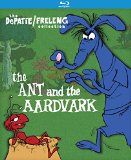| Reviews & Columns |
|
Reviews DVD TV on DVD Blu-ray 4K UHD International DVDs In Theaters Reviews by Studio Video Games Features Collector Series DVDs Easter Egg Database Interviews DVD Talk Radio Feature Articles Columns Anime Talk DVD Savant Horror DVDs The M.O.D. Squad Art House HD Talk Silent DVD
|
DVD Talk Forum |
|
|
| Resources |
|
DVD Price Search Customer Service #'s RCE Info Links |
|
Columns
|
|
|
Ant and the Aardvark, The
Kino Lorber brings us the DePatie-Freleng Collection, consisting of three releases with more on the way of 1960s and 70s animated shorts series from the studio that resulted from the untimely closure of Warner Bros' animation department. A classic formula of cartoons has been the hunter and the hunted, most famously WB's Wile E. Coyote and Road Runner, where one character wants nothing more in life than to catch and eat the other but constantly fails no matter the elaborate ways in which they try. The Ant and the Aardvark cartoons play mostly like Road Runner but the main difference is that both characters can talk. John Byner (best known to me as host of the 1980s sketch comedy show "Bizarre") voices both of them- the nameless Aardvark does most of the talking and speaks in the style of Jewish comedian Jackie Mason. The Ant (also without a definite name) talks like Dean Martin and maintains a similar "cool" persona, as he knows he's not in any real danger and is just going to see the Aardvark fail miserably in his attempts to get him.
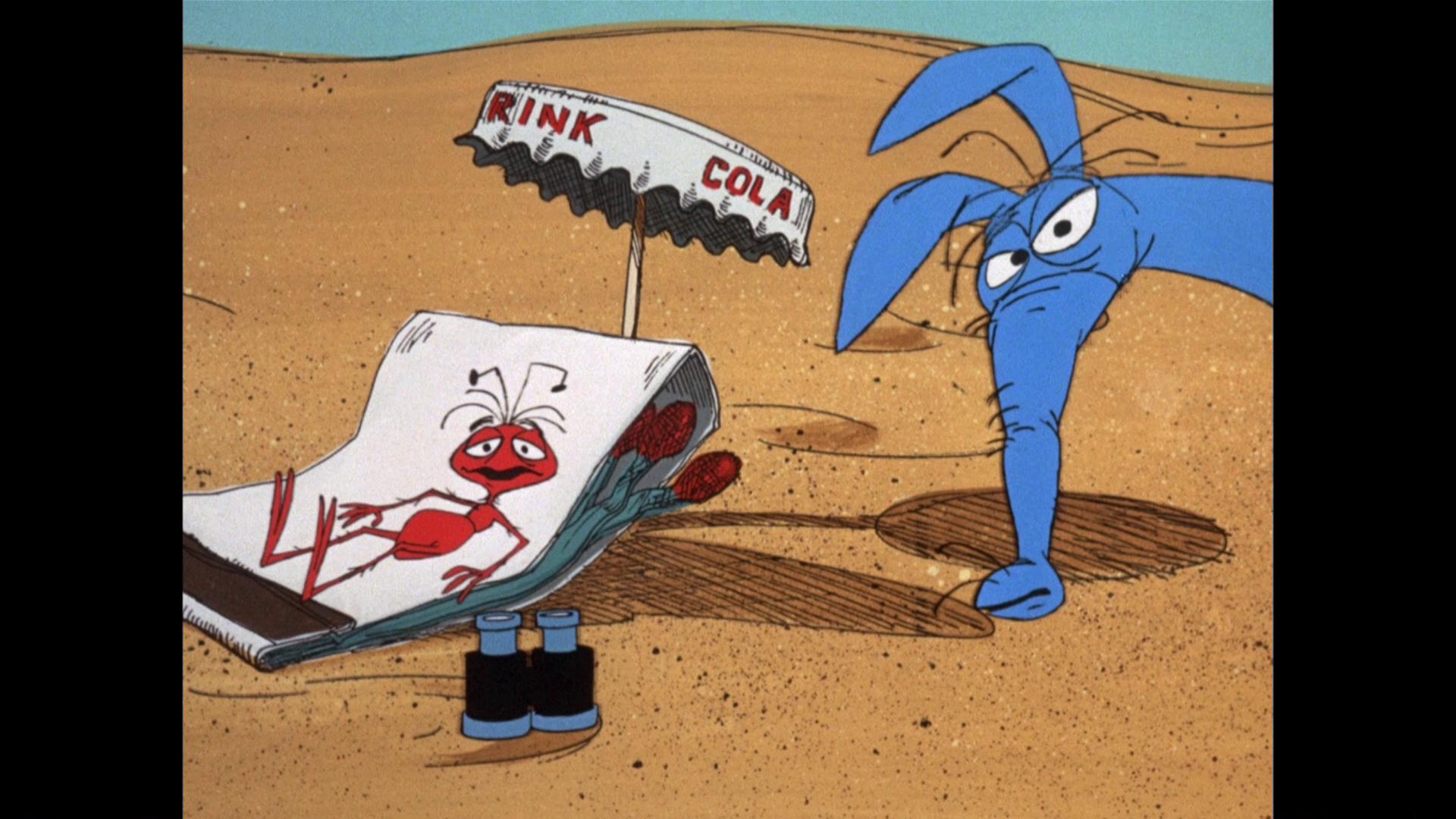
All seventeen cartoons in the series (produced between 1968 and 1971) are included on this Blu-Ray disc and most are rather thin on plot, running at just over six minutes each. Each cartoon works on its own as well, with many of them having the Aardvark introduce himself at the beginning- "I'm an anteater, and I'm starving! You know why? Because I haven't been able to catch an ant for a month!" Most of his other dialogue has him almost narrating the cartoon (instead of remaining silent like Wile E. Coyote), like hiding behind a tree saying "This time I'll give him a good smack, then I'll have a snack!" The Ant likewise reacts either to him with lines like "You're wasting your time, pal!" or to the audience with sarcastic "uh-oh"s when it looks like he's been cornered. A frequent gag is the Aardvark sticking his nose into a space where the Ant is hiding, only to suck up a rock or something else instead of his dinner. Like Wile E. Coyote he turns to a number of mail-ordered gadgets as well, ranging from straw-like contraptions to an "Instant Hole" that will produce a hole anywhere to a talking computer. A few of the cartoons interject a bit more of a storyline, including a tiger who becomes the Ant's sworn protector after he takes a thorn out of his paw (a play on the old "Lion and the Mouse" story) and an old cartoon standby where the Ant gains super-strength after taking a large amount of vitamins- don't try that at home, kids! Speaking of which, one of the biggest laughs is when the Ant turns to the audience and suggests that the kids go out for a snack so they don't see the violence that's about to start.
All of the shorts are very nice to look at, as the characters retain many of the features of the classic Warner Bros. cast but are stylistically in tune with the time period. The two main characters are just one color each (the Ant red and Aardvark blue), which could be perceived as cutting corners but they work very well against the multicolored backgrounds which also have a definite late 60s vibe to them. They also include a light-hearted Dixieland music score by Doug Goodwin which works very well, although it does get a bit repetitive when watching all 17 cartoons in one sitting.
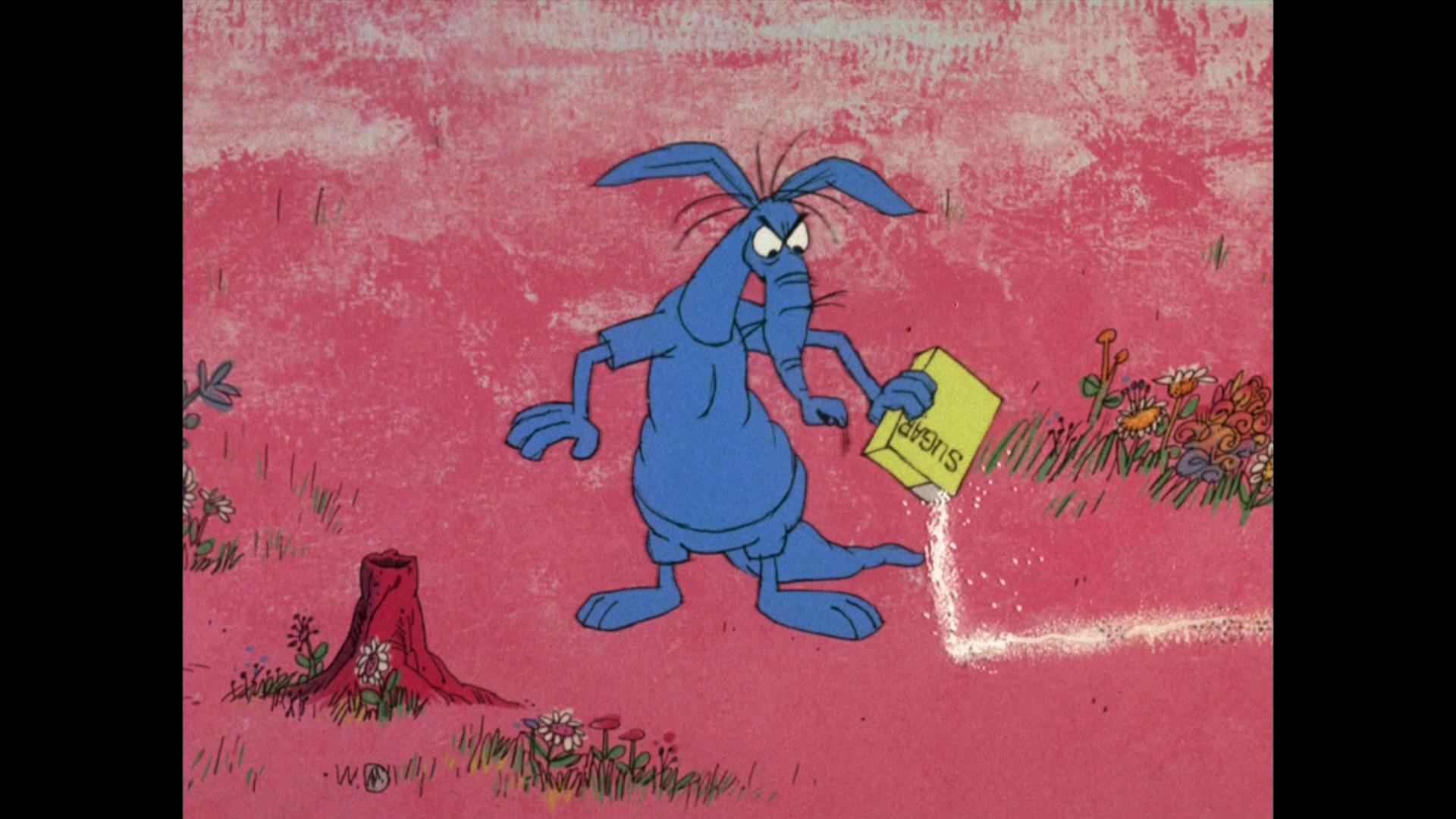
These cartoons were produced for pre-movie theatrical showing in a time when cartoons had pretty much been phased out in theaters, and are presented here in 4x3 format although they may have been shown cropped to 1.85 theatrically. All of them have been immaculately transferred in high definition looking like well-focused film at home- the film elements are also very clean with hardly any dirt or scratches present. Just about every pencil and brush stroke can be seen clearly, you can even spot some erased circles on the Aardvark that made up his preliminary shape before having details added. No compression artifacts or banding are present either.
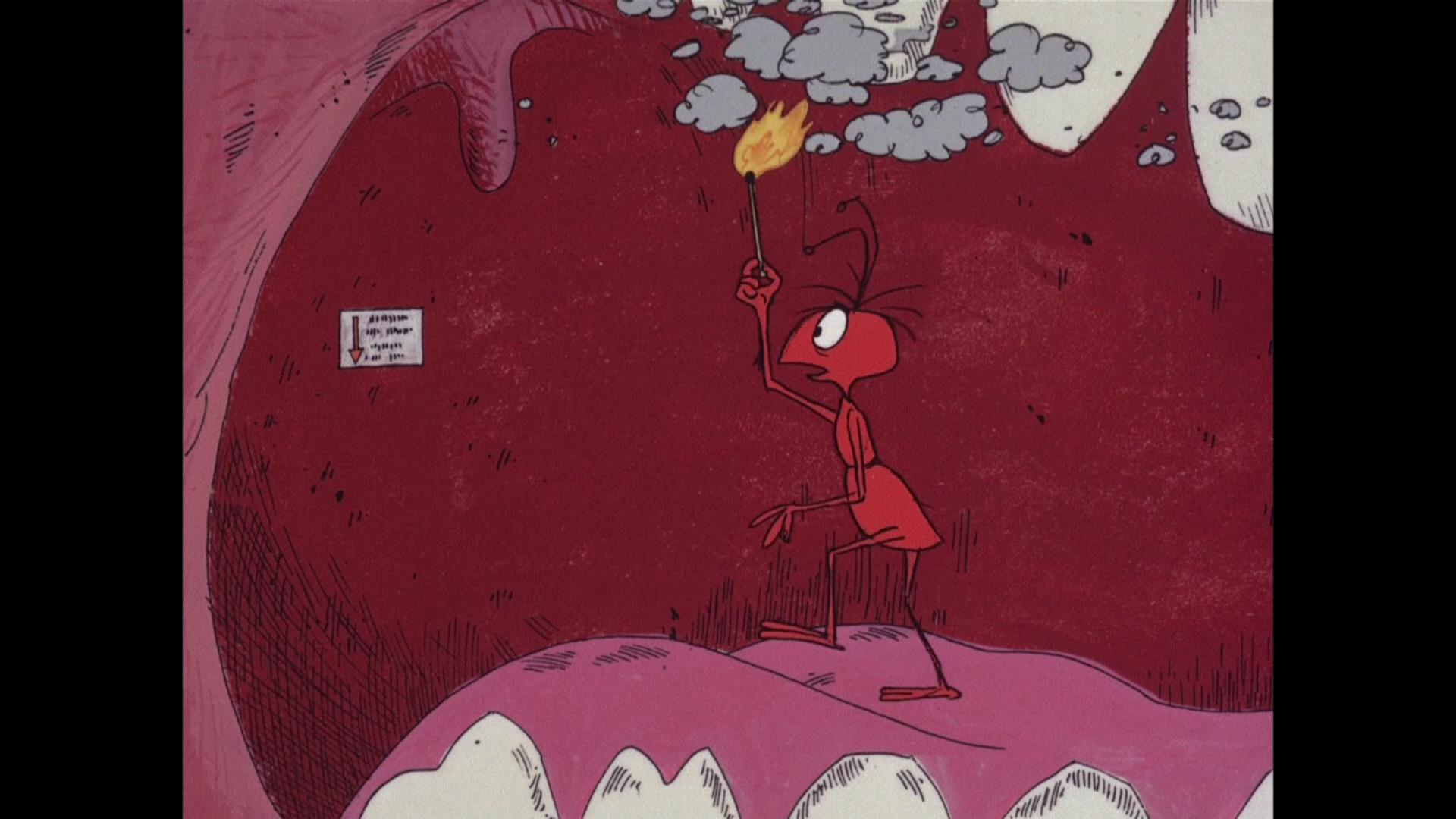
The mono audio tracks are encoded in 2-channel DTS Master Audio (flagged for bitstream output and thus playing through the two front left and right speakers on my system, though remaining phantom-centered) and very in quality between shorts- some are very clean while others have a bit of a muffled quality to them, appearing a bit strange accompanied by the very clean picture. This is one area where the purists will take issue, as four of the shorts (the first self-titled one, Never Bug an Ant, Don't Hustle an Ant With Muscle and Scratch a Tiger) have laugh tracks which were added for later TV airings. "Don't Hustle an Ant With Muscle" is especially strange since the track only appears on the LEFT channel with the original audio staying centered.
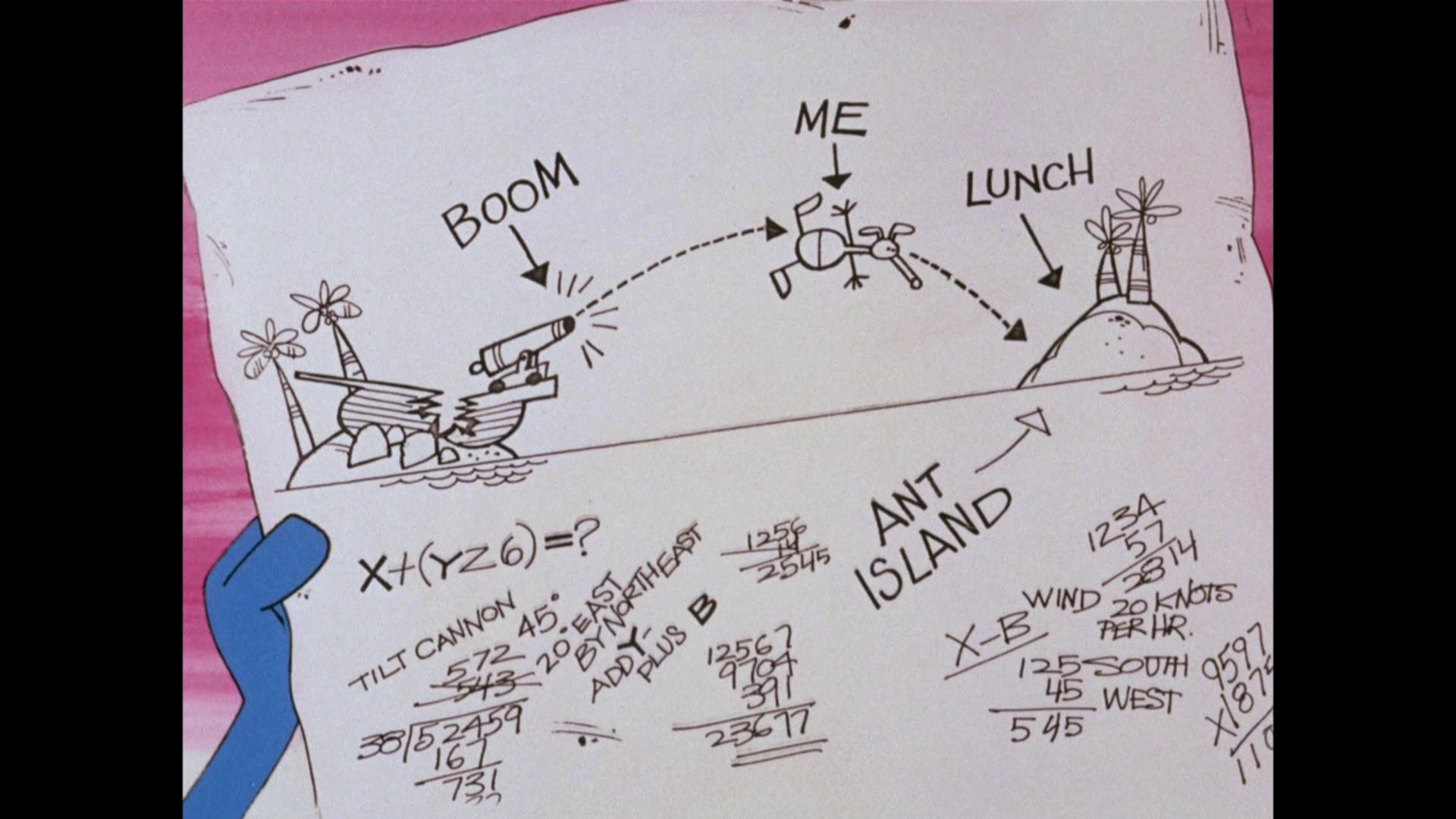
Two 15-minute retrospective pieces are included, both of which are also featured on Kino's "Crazylegs Crane" disc. "Goodbye Warner Bros., Hello DePatie-Freleng" gives a good account of how many of Warner's animators were able to keep their studio going after Warner had decided to stop doing cartoons, mainly doing animated title sequences for movies including The Pink Panther, TV commercials and then more short cartoons. "Of Aardvarks, Ants, Inspectors and Cranes" gives a brief history of how the Ant and the Aardvark were developed along with Crazylegs Crane and the Pink Panther-inspired Inspector. Four cartoons are also repeated with audio commentaries- two from Mark Arnold (author of several cartoon-related books including "Think Pink! The DePatie-Freleng Story") and one each with historians Greg Ford (interspersed with some archival audio from Friz Freleng) and Jerry Beck. While all seem to have a wealth of information and seem to reluctantly stop talking when the cartoons end, a lot of information is repeated in more than one commentary (mainly that these were the first of relatively few cartoons to credit all of the score's music performers, and how Jackie Mason wanted to take over voice duties himself after hearing about his being mimicked, but decided that John Byner still did it better.) They point out several details which I found interesting having an eye for animation techniques but no actual talent myself, unfortunately Freleng's portion is a bit difficult to hear.
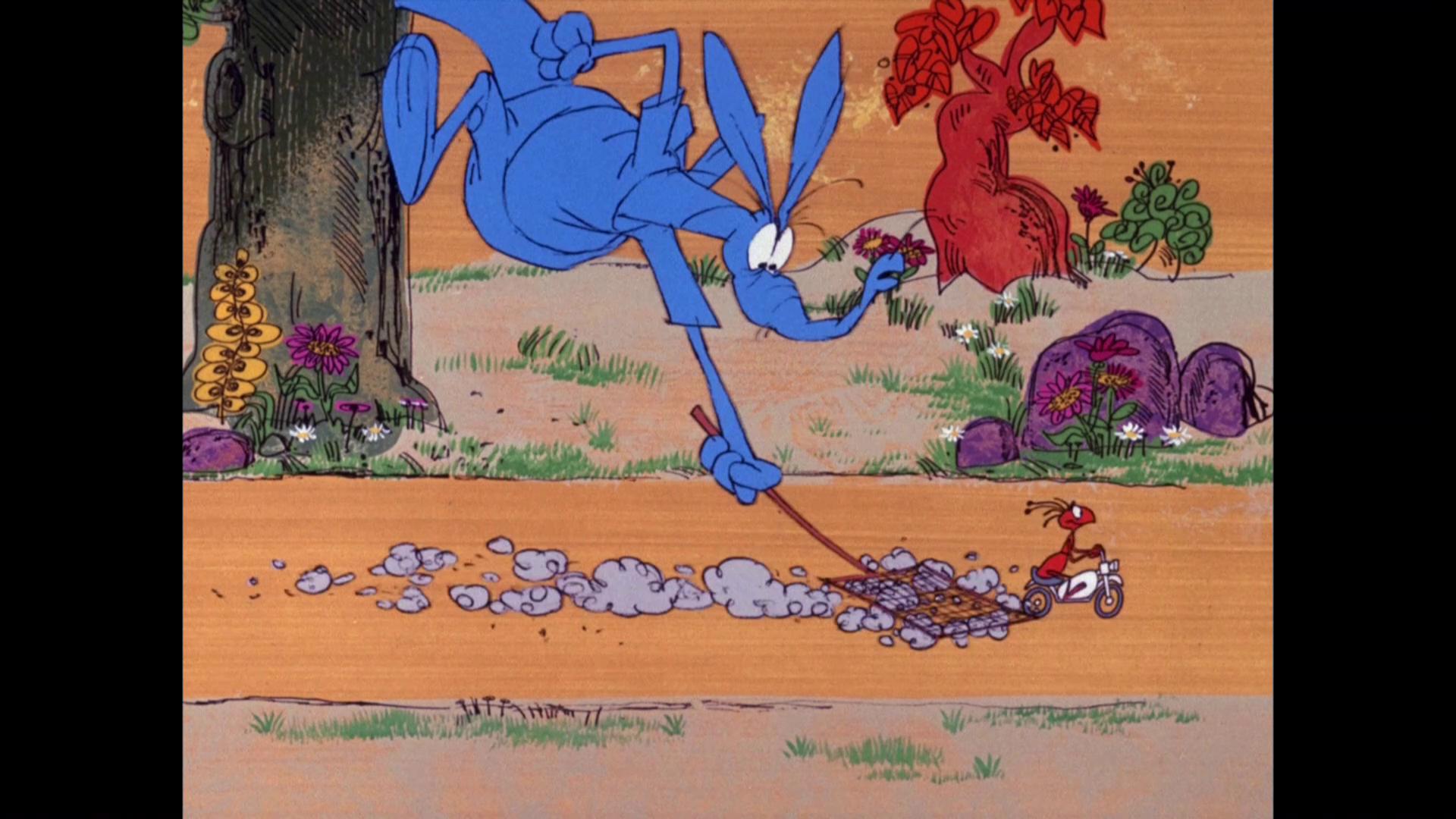
While "The Ant and the Aardvark" is mainly a one-note series which doesn't quite hold up when viewed all at once, each cartoon by itself provides a few good laughs and serve as good pre-movie material. The added historical information is certainly fascinating to hear how animators stayed employed when theaters were dropping cartoon shorts, and the hi-def transfers have these cartoons looking nearly perfect. All releases in this series will likely be must-haves for animation buffs.
Jesse Skeen is a life-long obsessive media collector (with an unhealthy preoccupation with obsolete and failed formats) and former theater film projectionist. He enjoys watching movies and strives for presenting them perfectly, but lacks the talent to make his own.
|
| Popular Reviews |
| Sponsored Links |
|
|
| Sponsored Links |
|
|
| Release List | Reviews | Shop | Newsletter | Forum | DVD Giveaways | Blu-Ray | Advertise |
|
Copyright 2024 DVDTalk.com All Rights Reserved. Legal Info, Privacy Policy, Terms of Use,
Manage Preferences,
Your Privacy Choices | |||||||









